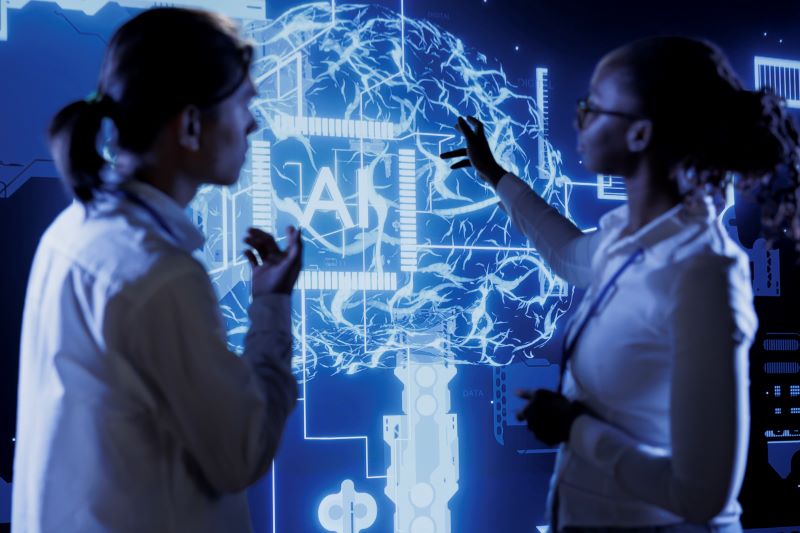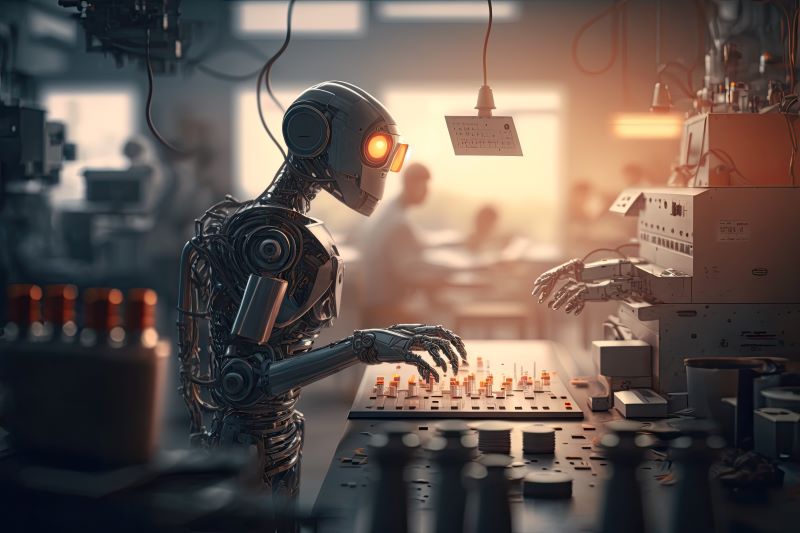Big Data vs AI: Understanding the Key Differences
In our wild era of digital revolution, big data and AI are two of the most talked about technologies. No doubt, both of them will play an enormous role in shaping the future of global society. The extent spans far beyond what we’ve seen from the likes of OpenAI’s ChatGPT and Google’s Gemini. In fact, both big data and AI are in their infancy. The possibilities are almost unfathomable to many of us, which is why we want to set the record straight on key differences between big data vs. AI.
Table of Contents
Big Data vs. AI: What’s the Difference?

Both big data and artificial intelligence excel at extracting insights from large volumes of data. They do so at an incredible pace and with a flexibility and efficiency no human can parallel. However, their scope and functionality both intersect and deviate at different points. There are significant differences in what big data and artificial intelligence are designed to do and how they can benefit users.
Big Data Focuses on Analysis
Every day, 2.5 quintillion bytes of data are created! The sheer volume of data available makes managing it, organizing it, and processing it impossible for humans. This is why we need big data algorithms and technology to read, categorize, and interpret all of this information.
Sources of big data include social media, equipment, transaction processing systems, clickstream logs, and mobile apps. The United States government even released its data sets to the public at here. There is currently a library of 245,455 data sets outlining everything from crime rates to the lottery powerball winning numbers over the last decade.
Artificial Intelligence Learns From Data
The primary goal of modern artificial intelligence is to provide assistance to humans by mimicking their intelligence. Rather than perform lofty analysis, it uses technologies like machine learning and natural language processing (NLP) to answer queries (called prompts) and respond in a way that feels intuitive and relatable to human beings.
Artificial intelligence works through progressive algorithms that can change on their own. They are more adaptable to input and have the ability to learn and evolve with new information.
During its infancy, AI is trained on vast amounts of data. Then, algorithms are applied to inform AI how to interact with, interpret, and process that information. These algorithms are built on predictive models, allowing the AI to identify patterns, offer insights, and provide suggestions.
Big Data and AI Shape Decisions Differently

Big data is highly focused on descriptive analytics to help users glean insights about the meaning behind data. It can be paramount in identifying previously undiscovered connections and correlations between data sets based on given parameters.
Artificial intelligence, however, focuses on using information to predict future outcomes and steer decision-making in the right direction on the foundation of high probability.
Even their creation shows a stark contrast between their intentions. Big data algorithms are built by data scientists while AI is developed by programmers. Data scientists have specialized skills in working with extremely large data sets, and they possess adept data mining techniques that help them extract insights from the information they’re working with.
Artificial intelligence is made by programmers who build AI using coded languages. These languages are more tech-central and less data-focused. The programmers’ goal is not to create a data-processing algorithm but rather breathe life into code that can make it intelligent and responsive to user input.
AI uses statistical analysis to make predictive insights about behaviors and outcomes in any situation. Meanwhile, big data can perform diagnostic, descriptive, or predictive analysis. It can also be paired with AI to make prescriptive analyses and suggest the best decisions for the future based on certain criteria.
Big Data Centers on All Data, AI Has a Narrower Focus
Big data sees potential in all data, making it a highly sophisticated and insightful tool. Artificial intelligence focuses more on relevant data sets, and it can even be built and trained on highly specific data sets to acquire its own expertise in a particular subject matter.
With artificial intelligence, irrelevant data is ignored. Big data casts a wider net, allowing for more in-depth analyses and potentially more innovative and surprising insights.
What Can AI and Big Data Do for You?

Big data and artificial intelligence can be used in tandem to rapidly assess large volumes of data, develop and test hypotheses, and process rapidly changing information in real-time.
Unlike big data algorithms, AI has the ability to learn and grow over time. Machine learning technology enables artificial intelligence to change in response to new information. Its own algorithms, per se, shift to adapt to its new digital landscape. Meanwhile, big data requires human intervention to evolve.
Big data and AI can help businesses make more informed decisions by processing and interpreting data in ways human beings cannot. The technologies can also support human talent and innovation through software like AI project management tools. An AI program manager is not designed to take the work away from human beings. Instead, it streamlines their workflows and allows them to perform their skills more adeptly by automating certain tasks and delivering actionable insights at pivotal moments.
Big Data and AI for Web Scraping

Artificial intelligence can enhance big data analysis used to perform web scraping. With the inclusion of AI algorithms, users can analyze large amounts of data even faster, extrapolate patterns, and decipher them into useful information. Meanwhile, big data offers further insights that help businesses make better decisions.
The machine learning component of AI makes it valuable for web scraping; its enhanced cognitive abilities and responsiveness to human inquiry allow it to provide more nuanced data extractions. It’s also easier to manipulate, leading to more effective scraping and harvesting protocols that are tailored to each business’s needs and objectives.
What Does the Future of Big Data and AI Hold?

As technology continues to improve, artificial intelligence will become smarter, and big data algorithms will be more efficient. Data scientists will even begin to use AI to start making more efficient algorithms that help enhance their analyses.
The more connected people become thanks to AI’s integration into daily life, the more data people will have to analyze. Artificial intelligence will be a conduit in generating big data while also being a central tool in analyzing all of it.
Thanks to the enhanced cognition and generative abilities of AI, it will become easier for businesses, healthcare professionals, educators, and researchers to draw meaningful insights from vast quantities of data. They will be able to use artificial intelligence to support their goals and personalize it to meet their needs at any point in time.
You will also find more tools emerge with AI embedded as a key technology rather than a bonus feature. Because artificial intelligence wields so much potential, it is being rapidly adopted as a foundational piece of technology that will revolutionize the way everyone works, connects, and interacts with the world around them. And through it all, big data will exist to provide descriptive analytics and meaningful extrapolations that guide human innovation forward.
The information contained within this article, including information posted by official staff, guest-submitted material, message board postings, or other third-party material is presented solely for the purposes of education and furtherance of the knowledge of the reader. All trademarks used in this publication are hereby acknowledged as the property of their respective owners.
